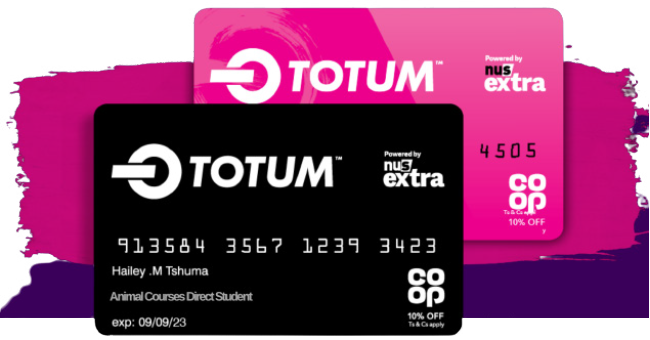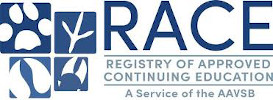Level 6 Diploma in Veterinary Physiotherapy with Hydrotherapy
MAKE AN ENQUIRY
| Ofqual Code | . |
|---|---|
| Qualification Level | 6 |
| Award type | Diploma |
| Equivalent to | University Degree |
| Guided Learning Hours | 1879 |
| . | |
| Enrolment will be valid for | You have 3 years to complete your course. |
| Credits | 458 |
| Entry Criteria | Learners must be at least 18 years of age to enrol. Learners must also have a Level 3 Diploma in Hydrotherapy (including treadmill unit – with either ABC/SEG), and prior experience within the industry. Learners must be able to access veterinary physiotherapy clinics to complete 800 hours of clinical practice. |
| Assessment Method | You will be assessed via a combination of video and photo submissions, case studies, your supervisor will also need to provide witness testimonies. |
| Practical (mandatory) | This qualification includes 25 days of practical physiotherapy training and assessment at an approved centre. Once the relevant threshold criteria have been met, the placement is taken in parts as learners progress through their studies. Please note that learners must pay for their course in full before accessing the practical training. In addition, learners must independently arrange work shadowing with veterinary physiotherapy clinics to complete 800 hours of clinical practice |
| Certification | Learners can expect their certification within 6 months of completing the course, following the (EQA) External Quality Assurance of assessment. All course fees, inclusive of all payment plans including our Premium Credit Limited option, must be settled before certification can be ordered. |
| . | . |

This course meets the Canine Hydrotherapy Association (CHA) membership requirements.
The Level 6 Diploma in Veterinary Physiotherapy with Hydrotherapy qualification will provide learners with a higher-level knowledge of small animal hydrotherapy and allow them to qualify as a veterinary physiotherapist, gaining the skills, knowledge and practical training required to treat animals both in and out of the water. The course content combines a sound knowledge base of anatomy and exercise physiology in animals along with occupational competence in providing excellent rehabilitation and physiotherapy care for a range of animals and conditions.
The units of this qualification have been carefully curated with the guidance of industry professionals to ensure that learners receive a rich knowledge base to equip them for a rewarding career in this industry. Learners will explore topics such as advanced neuro physiotherapy, understanding pain, physiotherapy techniques, professional skill, exercise prescription and rehabilitation. Learners will benefit from the higher-level hydrotherapy content which compliments the comprehensive physiotherapy content. Clinical reasoning and case reporting are also examined within this qualification and learners will gain valuable experience by completing 800 clinical practice hours.
This qualification is an excellent choice for students wishing to qualify as a Veterinary Physiotherapist. On successful completion of this qualification, learners can seek employment as veterinary physiotherapists and hydrotherapists, working to treat animals both in and out of the water. Alternatively, learners can seek employment in a specialist role within a wider practice setting. This qualification also ensures that learners are equipped with the professional skills needed to work as a self-employed Veterinary Physiotherapist.
The practical training will be conducted in small numbers split over the clinical spaces with a mix of live clients and practitioner animals to allow focused personal development. There will be time for reflective learning as well as larger group workshops. Learners will be actively hands-on in all aspects of running a busy practice and teaching approaches will be adapted to reflect learning styles. A range of practical dates are available. Learners attending the Canine Fitness Centre may be able to benefit from additional benefits and opportunities beyond the structured learning including business mentoring and opportunities with an experienced senior business executive, discounted access to an exercise prescription and client record app, and further clinical and behavioural experience with our partners.
Unit 1
Unit 1: Application of Advanced Hydrotherapy and Treadmill Techniques
Discover small animal hydrotherapy using advanced pool and treadmill techniques
Unit 2
Unit 2: Hydrotherapy Business Management and Branding
Develop knowledge on how to establish a hydrotherapy company
Learn how to manage a hydrotherapy business
Explore branding and marketing
Unit 3
Unit 3: Comprehensive Canine Nutrition
Discover the role of nutrients for canines and how they support bodily functions
Study the structure and function of the canine digestive system
Learn about the benefits of canine nutritional and diet
Unit 4
Unit 4: Common Medical Conditions that Benefit from Hydrotherapy
Explore orthopaedic and neurological conditions that may benefit from hydrotherapy treatment
Investigate how to manage small animals with these conditions
Unit 5
Unit 5: Feline Behaviour and Welfare in Hydrotherapy
Understand feline behaviour and handling in a hydrotherapy setting
Unit 6
Unit 6: Musculoskeletal System Anatomy and Terminology
Explore in detail the muscles and joints and their role within the skeletal system
Learn the anatomical terminology used in referrals
Unit 7
Unit 7: Comprehensive Canine Laser Therapy
Study canine laser therapy and the different types of class IV laser equipment
Explore the different types of wavelengths and their importance in laser therapy
Unit 8
Unit 8: Canine Musculoskeletal System and Physiotherapy Practice
Discover the structure and function of the canine musculoskeletal system
Study common orthopaedic conditions that are suitable for physiotherapy and the equipment required
Unit 9
Unit 9: Fundamentals of Land-Based Manual Therapy
Learn the importance of clinical reasoning of land-based manual exercise
Understand the risk and contraindications of land-based therapy
Study the reasons for integration and transfer of land to water-based therapy
Unit 10
Unit 10: Effective Maintenance and Water Management in Hydrotherapy Facilities
Develop the knowledge to maintain hydrotherapy pools and treadmills effectively
Understanding the potential risk and hazards of inadequate maintenance
Unit 11
Unit 11: Practical Skills and Programme Design in Small Animal Hydrotherapy
Study range of practical skills required in small animal hydrotherapy
Design and evaluate programmes for hydrotherapy and treadmill treatment plans
Unit 12
Unit 12: Management and Duty of Care in Hydrotherapy Centres
Learn the duty of care with running a hydrotherapy centre
Study the implications of health and disease and record-keeping in a hydrotherapy centre
Unit 13
Unit 13: Comprehensive Small Animal Massage
Explore small animal massage e and the impact on the anatomical structures of small animals
Examine the different types of small animal massage techniques
Understand the benefits for conditions experienced by small animals
Unit 14
Unit 14: Canine Body Language and Stress Management in Small Animal Hydrotherapy
Understand how to recognise and reduce stress during hydrotherapy
Learn the safe handling techniques to use on small animals
Unit 15
Unit 15: Gait Analysis and Clinical Reasoning
Study conducting gait analysis and recognising normal and abnormal gait patterns
Learn how to attribute these findings to a patient problem using clinical reasoning
Learn how to recognise abnormalities in gait which may form because of compensations
Unit 16
Unit 16: Palpation, Massage, Stretching, and Joint Mobilisation Techniques
Develop palpation skills and apply these skills to manual techniques
Learn skills to assess a patient before application, evaluate the response and the passive range of motion
Learn stretching techniques and joint mobilisations
Unit 17
Unit 17: Canine Nutrition and Health Optimisation
Analyse the content of commercial and home-cooked diets
Study the effects of obesity, weight reduction and how to assist owners
Study the nutritional requirements of a hospitalised patient
Learn how diet and health can affect the performance of the canine athlete
Unit 18
Unit 18: Canine Sports and Conditioning
Learn the common UK sports that dogs participate in
Discover canine conditioning and learn which injuries affect dogs participating in various sports
Understand the principles behind rehabilitating sporting dogs
Unit 19
Unit 19: Clinical Reasoning and Safe Application of Electrophysical Agents
Learn how to clinically reason which patients would benefit from electrophysical agents
Demonstrate the safe application of these therapies and know the contraindications and precautions
Unit 20
Unit 20: Business Development and Resilience
Develop business skills with web platforms and social media
Learn the VAT and the VAT registration process
Learn how to increase business profits and methods of expansion
Develop a knowledge of how to cope when running a business in the face of adversity
Unit 21
Unit 21: Customer Service Excellence in Physiotherapy
Develop excellent customer service skills during a physiotherapy service
Learn how to develop the right environment for patient and owner
Learn how to maintain professionalism and handling with complaints
Unit 22
Unit 22: Canine Athlete Assessment and Treatment Planning
Learn how to assess a canine athlete, create treatment goals based and then clinically reason treatment techniques
Evaluate an athlete canine's response to treatment, prepare them to return to function, and how to prevent re-injury
Unit 23
Unit 23: Effects of Injury and Physiotherapy Intervention to Aid Tissue Repair
Study the effects of damage to the musculoskeletal system
Study tissue response to injury, inflammation, regeneration, and repair
Unit 24
Unit 24: Lifelong Learning and Professional Growth in Animal Rehabilitation
Understand how lifelong learning can provide benefits to the animal rehabilitation industry
Develop methods of adopting lifelong learning and how to better succeed in a career and improve animal welfare
Unit 25
Unit 25: Biomechanical Principles in Rehabilitation and Conditioning
Study the principles of biomechanics and how this relates this to the functions of the MSK
Study the biomechanics of locomotion, described by kinetics and kinematics and application
Learn kinesiology in methods of rehabilitation and conditioning
Unit 26
Unit 26: Multidisciplinary Teamwork in Veterinary Care and Sport Medicine
Understand how a Multidisciplinary Teamwork (MDT) approach can benefit professionals and clients in vet and sport medicine
Understand the different roles in veterinary care and sport medicine
Unit 27
Unit 27: Strength and Conditioning in Animal Rehabilitation
Understand the use and the benefits of strength and conditioning exercises
Learn what level to start and develop an exercise program based on the patient’s response
Understand the contraindications for strength and conditioning exercises
Unit 28
Unit 28: Physical Principles and Patient Benefits of Electrical Therapies in Rehabilitation
Explore the physical principles behind electrical therapies
Learn about thermal therapies, therapeutic ultrasound, electrical stimulation including NMES and TENS, pulsed magnetic field therapy and shockwave therapy
Unit 29
Unit 29: Musculoskeletal and Systemic Responses to Strength Training and Conditioning
Study how the musculoskeletal system responds to strength and conditioning, at the cellular and a gross level
Discover different types of strength and conditioning training can have different effects on body tissues
Learn about the respiratory system, cardiovascular system, and haematological and biochemical systems
Unit 30
Unit 30: The Aging Process and Geriatric Patient Care
Explore how the ageing process affects the cells, organs, and musculoskeletal system
Investigate how diet and exercise can affect the ageing process
Understand which neurological and orthopaedic conditions commonly affect the geriatric patient
Learn how to assess, clinically reason treatment techniques for and how to adapt an exercise programme
Unit 31
Unit 31: Practical Application of Research Methodology
Explore methodology based on research questions
Understand what methods to use for different research questions and how to apply such methods in practice
Unit 32
Unit 32: Assessing and Monitoring Welfare in Small Animals
Learn how to assess the welfare needs of small animals particularly, dogs, cats, and rabbit
Discover how to monitor the health needs and care for dogs, cats, and rabbits
Understand the impact of stress and animal behaviour on animal welfare
Unit 33
Unit 33: Tissue Changes and Rehabilitation Effects
Study the changes in specific tissues following a period of immobilisation following injury
Understand how to remobilisation during rehabilitation
Discover the effects on tissue of specific conditions and their rehabilitation
Learn how to examine tissue response to both strength and endurance training
Unit 34
Unit 34: Cellular Anatomy, Injury, and Responses
Study the anatomical structures contained within the cardiovascular, respiratory, digestive, and urinary systems.
Learn the impact of physiotherapy on the body
Unit 35
Unit 35: Understanding and Managing Patient Behaviour in Physiotherapy Sessions
Study the behavioural implications which may arise because of pain
Understand how a patient’s behaviour may change in response to fear
Learn how to deal with aggressive canine and feline patients
Discover how to use behavioural modification and training techniques to make the session a positive experience for the patient
Unit 36
Unit 36: Neurological Assessment and Management in Small Animal Physiotherapy
Gain a greater understanding of the anatomy of the central and peripheral nervous systems
Study spinal reflexes and the information they give about a patient’s neurological function
Learn how to perform a neurological exam on an animal patient
Unit 37
Unit 37: Clinical Practice in Veterinary Hydrotherapy and Physiotherapy
Undertake a minimum of 800 clinical practice hours across the duration of their training
This training will be supervised and will allow learners to observe and apply aspects of learning and practical skills required for the veterinary physiotherapy profession
Unit 38
Unit 38: Clinical Reasoning in Rehabilitation
Study the clinical reasoning in the rehabilitation setting and how clinical reasoning errors occur
Unit 39
Unit 39: Treatment Plans for the Rehabilitation of Common Musculoskeletal Injuries
Explore the common injuries which patients are referred for rehabilitation
Learn how to create treatment goals for patient rehabilitation.
Develop a hydrotherapy/ physiotherapy treatment plan for rehabilitation
Learn how to evaluate the response to a treatment plan for rehabilitation
Unit 40
Unit 40: Cellular Anatomy, Injury, and Responses
Discover the anatomical structure of the cell and the function of the components which make up the cell
Understand the causes of cellular damage and how different types of injury affect the cell in different ways
Unit 41
Unit 41: Individualised Exercise Prescription in Rehabilitation
Learn how to ensure the home environment is suitable for the patient
Learn how the stage of the healing affects the exercises prescribed
Learn how to develop an exercise prescription for a specific patient
Unit 42
Unit 42: Physiotherapy Techniques and Equipment
Discover the physiotherapy techniques that can be used for rehabilitation
Study the techniques and equipment that can be used to enhance patient strength, range, and balance
Unit 43
Unit 43: Principles of Rehabilitation in Canine and Feline Patients
Learn the principles and goals of rehabilitation
Study how differences in morphology can impact the rehabilitation of small animal patients
Explore the different rehabilitation settings in which therapies can take place
Unit 44
Unit 44: Professional Practice in Veterinary Hydrotherapy and Physiotherapy
Learn how to promote good practice in the veterinary hydrotherapy and veterinary physiotherapy setting
Study how to effectively use communication and codes of conduct relating to the industry
Unit 45
Unit 45: Ethics and Legislation in Professional Physiotherapy Practice
Examine the ethics and legislation surrounding professional rehabilitation practice
Learn about the professional membership for Physiotherapists
Unit 46
Unit 46: Research Project
Conduct a supervised project, and develop an understanding of how to formulate, conduct, analyse and present a project
Unit 47
Unit 47: Competent and Compassionate Animal Care in Veterinary Physiotherapy
Learn how to implement competent, compassionate, and safe animal handling
Study the health and safety precautions to deliver a safe service in physiotherapy
Understand the professional behaviour requirements for a Veterinary Physiotherapist
Learn how to keep professional records as a Physiotherapist and the importance of doing so
Unit 48
Unit 48: Developmental Considerations for the Juvenile Patient
Study the development of the skeleton and the skeletal differences which may exist amongst juvenile patients
Study conditions young patients are referred for rehabilitation for and understand the ways to adapt to their needs
Unit 49
Unit 49: Legislation and Ethics in Small Animal Care
Explore the ethics relating to small animals with a focus on dogs, cats, and rabbits
Explore different ethical viewpoints in small animal legislation
Unit 50
Unit 50: Advanced Case Study
Construct a 2500–3000-word case study about a particular patient and their treatment session
Unit 51
Unit 51: Pain Management in Veterinary Physiotherapy
Understand the physiological mechanisms surrounding pain and the complexity of managing chronic pain
Study how patient behaviour may be affected by pain
Learn the pharmaceuticals commonly prescribed by veterinary surgeons to treat pain
Water is an optimal environment for rehabilitation and the easing of pain. Water buoyancy supports movement and also ensures protection for joints and muscles. Animal patients who receive physical rehabilitation in water have shown a faster return to their normal function.
*You will have access to the course for 3 years.
Register My Interest

GET YOUR NUS EXTRA/ TOTUM CARD
All students who complete qualifications from level 3 or above are eligible for the NUS extra / Totum Card, which gives you access to over 200 UK student discounts with brands like Co-op, Amazon and ASOS. Apply and find out more at https://www.totum.com/
















